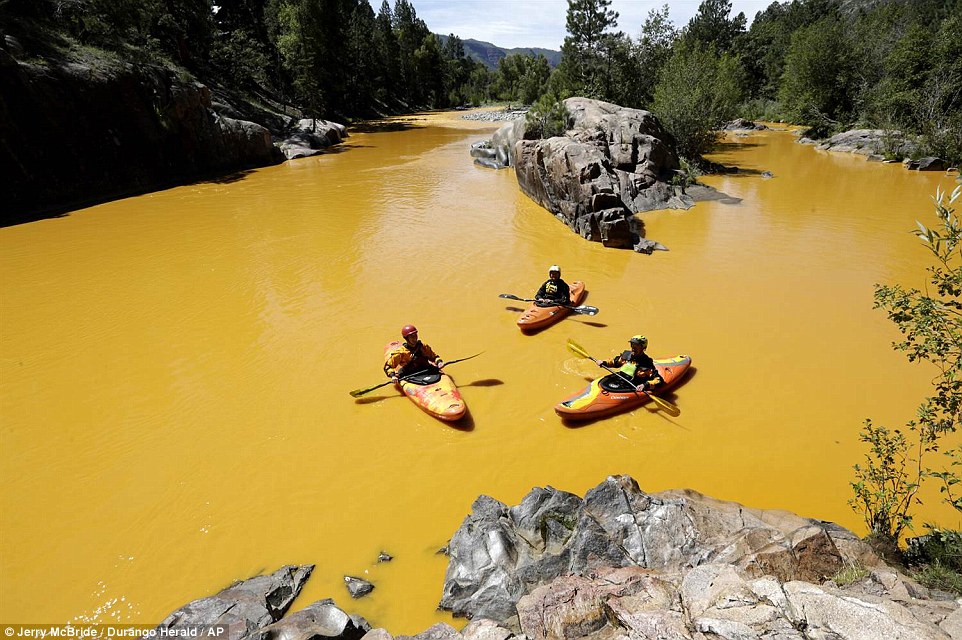You’ve seen the orange yellow water. It’s diluted downstream. But do you know what toxins were actually released in the Animas River? What are the hazards of this contamination? Here’s a look at the Toxic Animas River.
Although the metals will dilute downstream, they are heavy metals. That means much of it has settled on the bottom of the river and/or attached to organic matter. That’s good. The settled metals will be covered over by more river sediment, which reduces exposure. That’s bad. They’re still in there, exposed to the water and can be kicked up.
1. Acid mine water: The water released from the mine was acidic. The strongest pH sampled in the river by the EPA was 3.74. That’s in the range of citric acid and sodas. For reference, a pH less than 2 is considered hazardous waste. The acidic pH diluted downstream quickly.
The acidity of the water occurs when the metal sulfides, such as copper, are exposed to the air and water in the abandoned mine. The exposure causes oxidation of the sulfides, which generates acidity. That’s the basic, simplistic, not-too-chemistry answer.
2. Arsenic: Poisonous and a carcinogen. How’s that for a start? It can cause acute poisoning, but more likely the harm is from long-term, cumulative exposure. If ingested through the water, it can lead to damage of the red blood cells, liver, nerves, and brain. It’s a bad toxin. I’ve previously written about arsenic in wine.
3. Lead: I could probably repeat the arsenic portion for lead. If ingested, long-term exposure can cause behavior and learning problems in children, cardiovascular, kidney, reproductive problems and more. Why don’t we just say, “Don’t ingest lead.”
4. Cadmium: Another carcinogen. Same as lead and arsenic above. Are you getting the idea that these toxic heavy metals shouldn’t get in our bodies?
5. Copper: Copper is most likely the source of the river color. Its strong reddish color, mixed with all of the above plus sediment was the cause of that orangish color. Copper is the least toxic of the above, causing nausea, vomiting, kidney damage, and more. That’s all.
Dilution is not the solution to pollution…but it helps. If this toxic water were emptied into a lake or pond, it would have done much more damage. If you’re wondering about swimming, boating or fishing in the Animas, I’d suggest reading this article, Swimming In Contaminated Water. There’s a lot of contaminated water out there.
Have you visited the Animas River or a contaminated waterway in your area? If so, post about on social media to let others know. Citizen scientists are a powerful tool.

